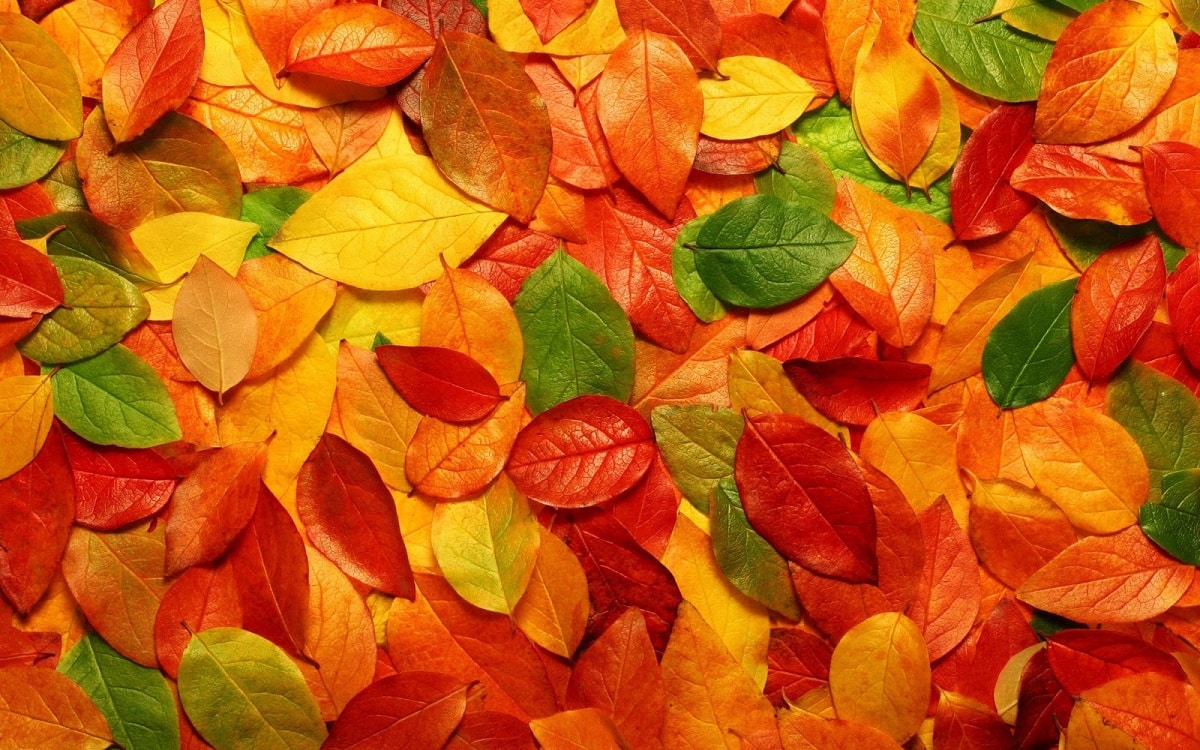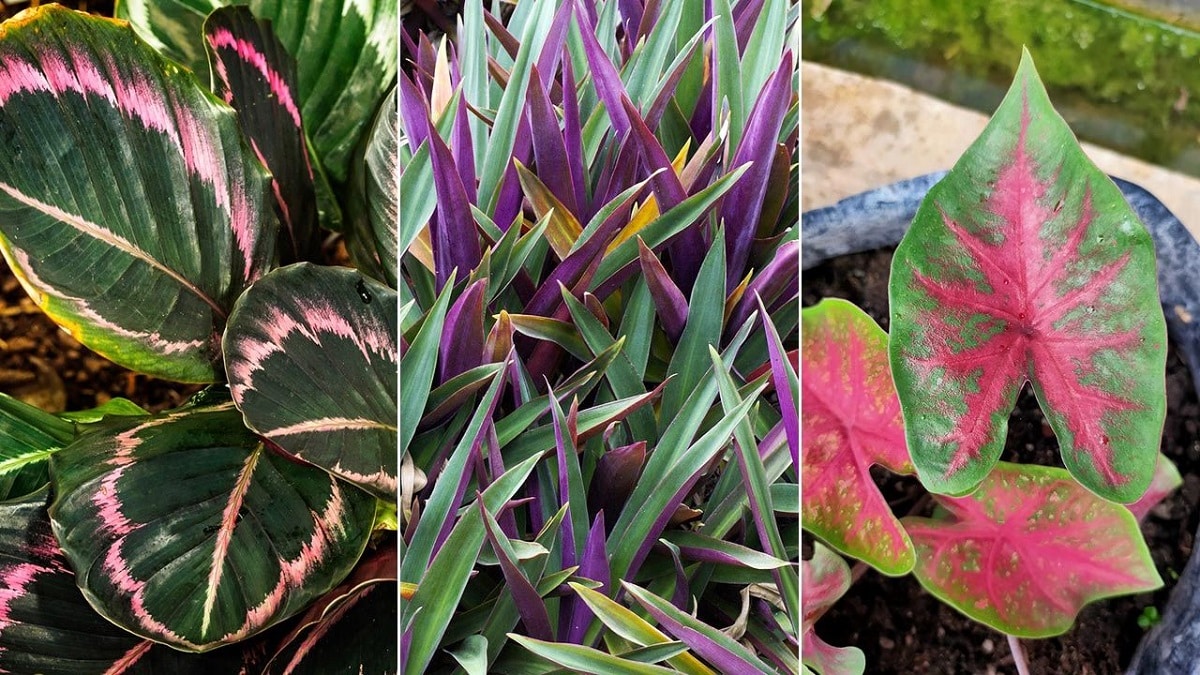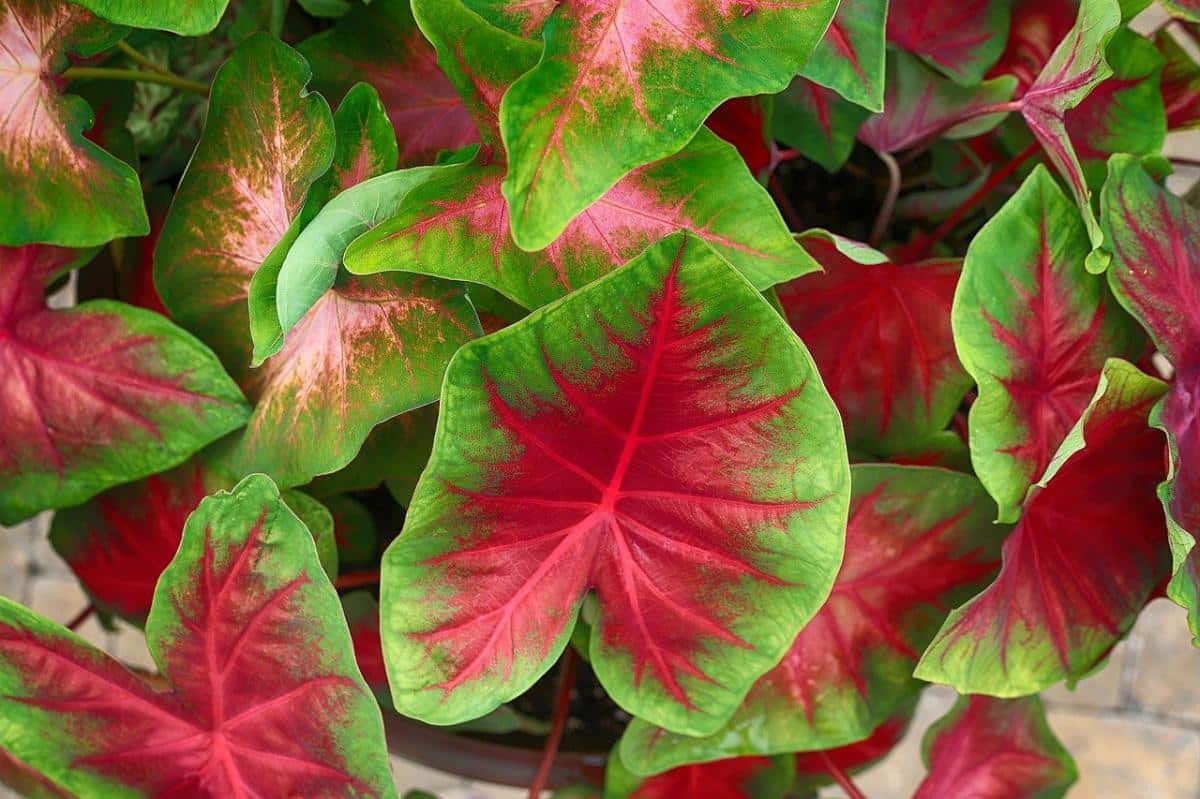
La coloring of plant leaves It has always called people's attention for being changeable, especially in those deciduous trees. Many people do not know why the coloration of the leaves of plants changes and why this is due.
For this reason, we are going to dedicate this article to telling you why the coloration of the leaves of plants changes and how important it is for their survival.
coloration of plant leaves

Leaves in nature, especially those on trees, are often green because they accumulate chlorophyll, a pigment found in chloroplasts, throughout the year. These are a component of plant cells that are involved in the process of use solar energy to convert carbon dioxide in the air and ground water into sugars that plants can use. Thanks to these sugars, plants can grow and actually survive because on the way to the process, they produce an essential waste product, oxygen. This is a process called photosynthesis.
Chlorophyll production requires a warm climate, and most importantly, that the sun is shining in the sky, so in autumn the days are shorter and the amount of light is reduced, which translates into a reduction in the production of this pigment. As a result, the leaves of deciduous plants lose their green color in the fall, giving way to those yellows and oranges, as well as the red of the leaves and other pigments in addition to chlorophyll, which are called carotenoids. and flavonoids. These include beta-carotene, which makes carrots orange, lutein, which makes egg yolks yellow, and lycopene, which makes tomatoes red.
In the case of leaves, these pigments often go unnoticed because chlorophyll dominates and somehow "hides" them in summer, but when autumn arrives, chlorophyll, carotenoids and flavonoids degrade and even the green pigment also degrades. degrade faster. That is why the leaves undergo color changes.
In addition to the colors mentioned, certain plants produce certain flavonoids called anthocyanins that can cause leaves to turn blue under certain circumstances. These pigments seem to have a protective function against sunlight and participate in the absorption of excess radiation.
In addition to changing pigment production, deciduous trees not only change color but also lose their leaves in winter, reabsorbing some nutrients and reducing the supply of sap that flows to the leaves. So if all the pigment is reabsorbed, the leaves will eventually turn brown. At some point in the process, they will fall to the ground.
The leaves then change to different colors, but many of us are particularly surprised by the red tint they sometimes take on. We've explained why this happens, but now we can tell you why this particular color appears.
What makes leaves turn red in the fall?

According to Emily M. Habinck of the University of North Carolina, the color red not only indicates a change in pigment, but also that the tree is rooted in hard soil. Habinck found that where soils were low in nitrogen and other essential elements, the trees tended to produce more red pigment than normal. Known as anthocyanins, this pigment protects plants, flowers and fruits from UV rays and prevents the production of free radicals.
As noted above, Habinck's findings support the hypothesis that increased anthocyanin production in red-leaved trees is the tree's defense against sunlight in the fall. The extra protection gives the tree more time to collect valuable nutrients, offsetting the energy cost of producing the pigment because the bright red leaves last longer.
Then we can see that the trees they are not defenseless creatures, they protect themselves, but they have no protection for us, so let's keep taking care of them. In order to help them in the first place, you must know them. Visit our article about the most interesting trees and forests in the world.
How to maintain the coloration of plant leaves

The intensity and color variation of plant leaves are not affected by season or temperature, unlike flowering. However, to increase the intensity and variety of shades of color of the plants, a series of basic care must be taken into account.
The first is to prevent the plant from drying out so the leaves don't turn brown. Also, try to remove all leaves that aren't variegated or different colors, because if green is dominant, the plant will end up that color. Secondly, the presence of uniformly colored leaves in variegated specimens gives them an unsightly appearance.
Plants with white, ocher and yellow leaves should receive as much sunlight as possible, but indirectly. This will also prevent green from being the dominant color. In any case, the best way to avoid losing color is to give them liquid fertilizer once a month, except in winter. It should also be remembered that excess fertilizer can have adverse effects, such as some changes in the color of the leaves.
Plants and algae contain a wide variety of pigments that produce the colors we see in them. These pigments are: chlorophyll-a (dark green), chlorophyll-b (green), carotene (orange), lutein (yellow), anthocyanins (reddish, purple, or blue), and phycobilin (red). The specific color exhibited by algae or plant organs often depends on the predominance of one or another pigment or their combination.
As you can see, there are numerous reasons why the coloration of the leaves of plants can also survive the cold winters. I hope that with this information you can learn more about the coloration of plant leaves and their characteristics.